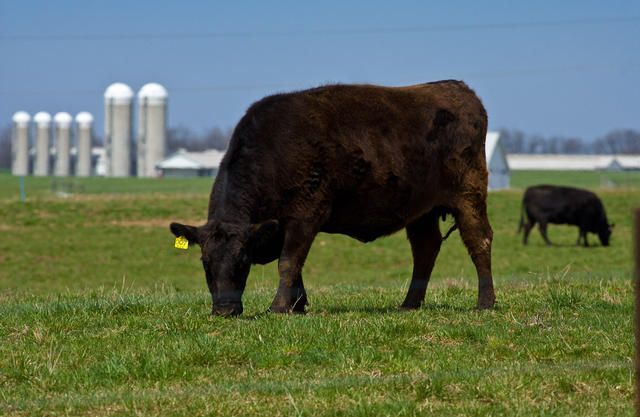Remember the risk of cyanide poisoning to ruminants
Remember the risk of cyanide poisoning to ruminants

As fall begins, livestock producers should remember that the increasing chance of frost raises the risk some forages have of causing cyanide poisoning in ruminants.
Specialists with the University of Kentucky College of Agriculture warn that warm-season annual forages, such as sudangrass, johnsongrass, sorghum and sorghum-sudangrass hybrids, have the potential to cause cyanide poisoning, especially when grazed by ruminants at an early growth stage or immediately after a non-killing frost. A non-killing frost can occur when temperatures are around 40 degrees and usually affects valleys and low-lying areas first.
“These summer annual forages are high-yielding and high-quality forages, said Ray Smith, UK extension forage specialist. “The potential for toxicity problems is low when these forages are carefully managed.”
Cyanide poisoning should not be confused with nitrate poisoning. Drought and heat can cause nitrate levels in forages to rise, especially in the lower third of the plant.
“Cyanide poisoning can be a problem anytime of the year when these forages are grazed in young growth stages,” said Garry Lacefield, UK extension forage specialist. “In a year like we are experiencing, being knowledgeable of this disorder will help us not make a bad situation worse.”
These warm-season annuals contain compounds capable of creating cyanide in their outer cells. Inside their leaf tissues are the enzymes needed to convert the compounds to cyanide poison. Stressful events on the plants, including cutting, chewing, frost or drought, cause the cells to rupture and the conversion to occur.
“Ruminants also have microbial flora in the rumen capable of converting the cyanogenic compounds in the plant into cyanide,” said Cynthia Gaskill, toxicologist with the UK Veterinary Diagnostic Laboratory. “The toxic gas goes to the bloodstream and blocks a necessary step in the release of oxygen from red blood cells. The animal essentially dies from lack of oxygen.”
Signs of cyanide poisoning can appear within a few minutes to a few hours after an animal has consumed these forages. Symptoms include rapid, difficult breathing, frothing at the mouth, muscle tremors, staggering and collapse, but many times, animals are found dead because it can happen fast.
To prevent cyanide poisoning, UK forage specialists recommend producers only let their animals graze warm-season annuals when they are at least 18 inches tall. Do not graze the forages when they have young tillers, when frost is likely and during droughts when plant growth is severely reduced. Wait at least one week after a rainfall event and two weeks after a non-killing frost before turning the animals onto pastures containing these forages. Producers should allow at least 72 hours before baling these forages to give the cyanide enough time to dissipate. Those chopping the forages for silage should delay feeding it to their animals for six to eight weeks after ensiling.
Questions about testing forages for cyanide should be directed the local office of the UK Cooperative Extension Service.
Extension Weather


